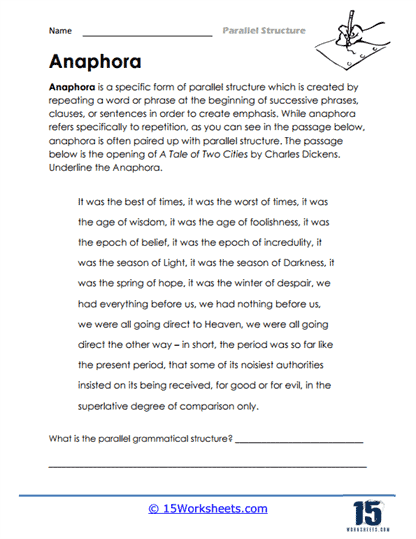The Anaphora in A Tale of Two Cities

Worksheet Description
This engaging activity introduces students to the powerful literary device of anaphora and its connection to parallel structure in Charles Dickens’ renowned novel.
In this worksheet, students will first learn about anaphora, a form of parallel structure that involves the repetition of a word or phrase at the beginning of successive phrases, clauses, or sentences for emphasis. They will then read the opening passage of A Tale of Two Cities and underline the instances of anaphora. By identifying and marking these repetitions, students will gain a deeper appreciation for the author’s intentional use of this rhetorical technique.
After identifying the anaphora, students will analyze the parallel grammatical structure employed in the passage. They will identify the consistent pattern of parts of speech, such as nouns, verbs, or adjectives, that contribute to the parallel structure. By understanding the parallel grammatical structure, students will gain insights into the author’s stylistic choices and the impact they have on the reader.
